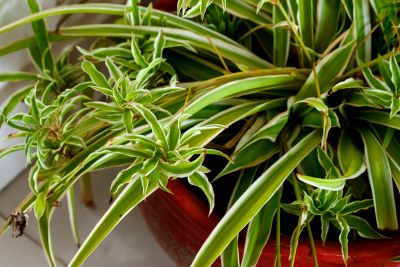Spider Plant Repotting
Repotting spider plants simply means moving spider plants to larger pots. It is often necessary to repot houseplants as they outgrow their pots, and spider plants tend to grow faster than most. Spider plants are native to the coastal areas of South Africa. The plant’s tuberous roots allows the species to thrive despite varying levels of precipitation in the wild. These same water-storing tuberous roots assist your spider houseplant to survive when you forget to water it for a few weeks. The roots grow fast, however. At some point before the roots crack open the pot, it’s time to think about spider plant repotting.
When Should You Repot a Spider Plant?
Spider plants grow best when they are slightly pot bound. However, the plants, roots included, grow fast. You’ll want to think about repotting spider plants before the plants crack their pots. Plants get different cultural care, so their growth rates vary. You just have to keep an eye on your spider plant. When you see roots showing above the soil, it is time to start moving spider plants to larger pots.
How Do You Repot a Spider Plant?
How do you repot a spider plant? Repotting a spider plant is fairly easy. You gently remove the plant from its current pot, rinse and trim its roots, then replant it in a larger pot. When you are moving spider plants to larger pots, make sure the new pots have good drainage holes. Spider plants don’t tolerate wet soil for very long. Use a general-purpose potting soil or soilless medium for spider plant repotting. Fill the bottom of the pot with soil, then place the plant’s roots in the soil. Keep adding soil and tucking it around the roots until all the roots are covered. Water the plant well and care as usual.
